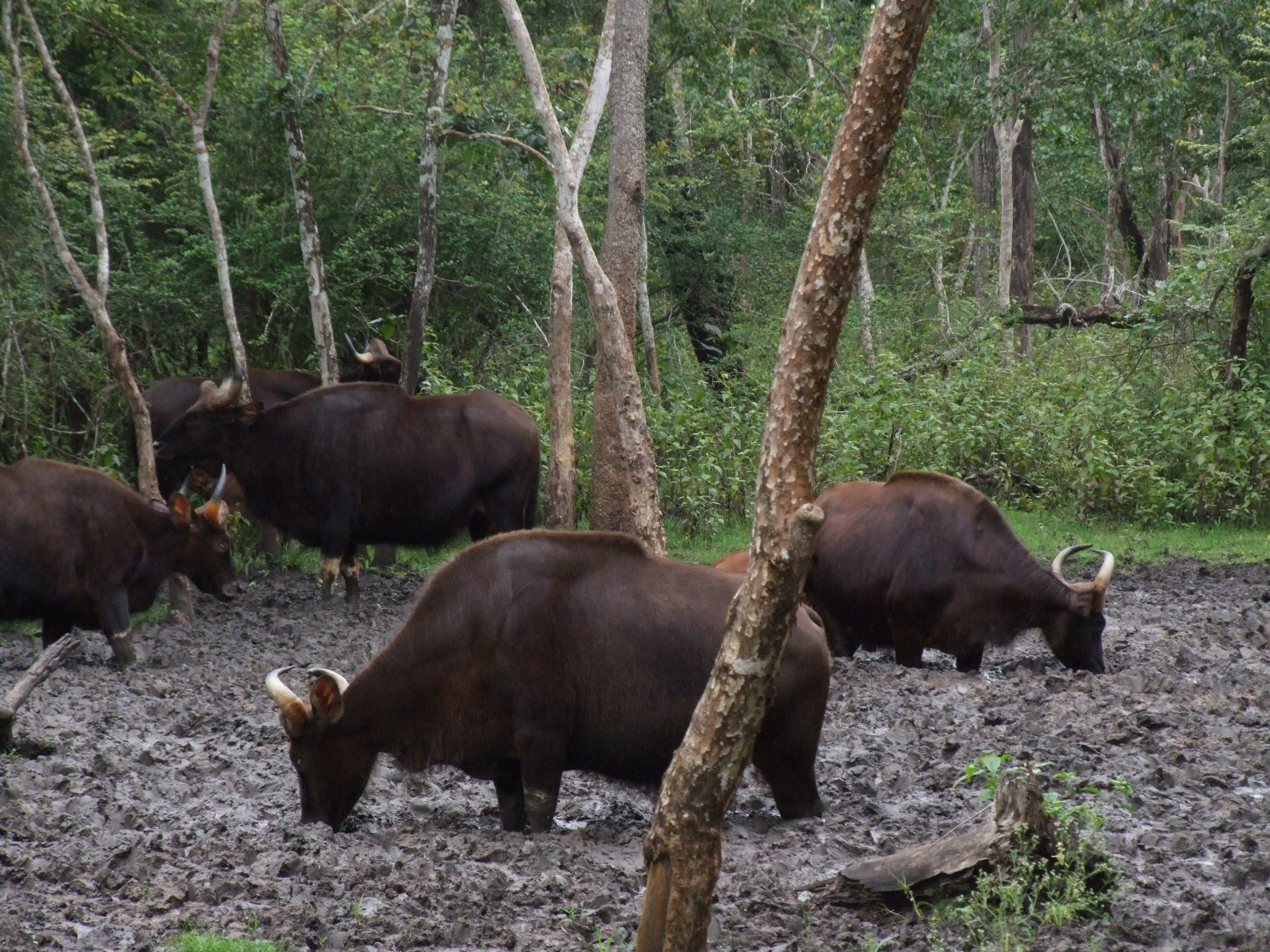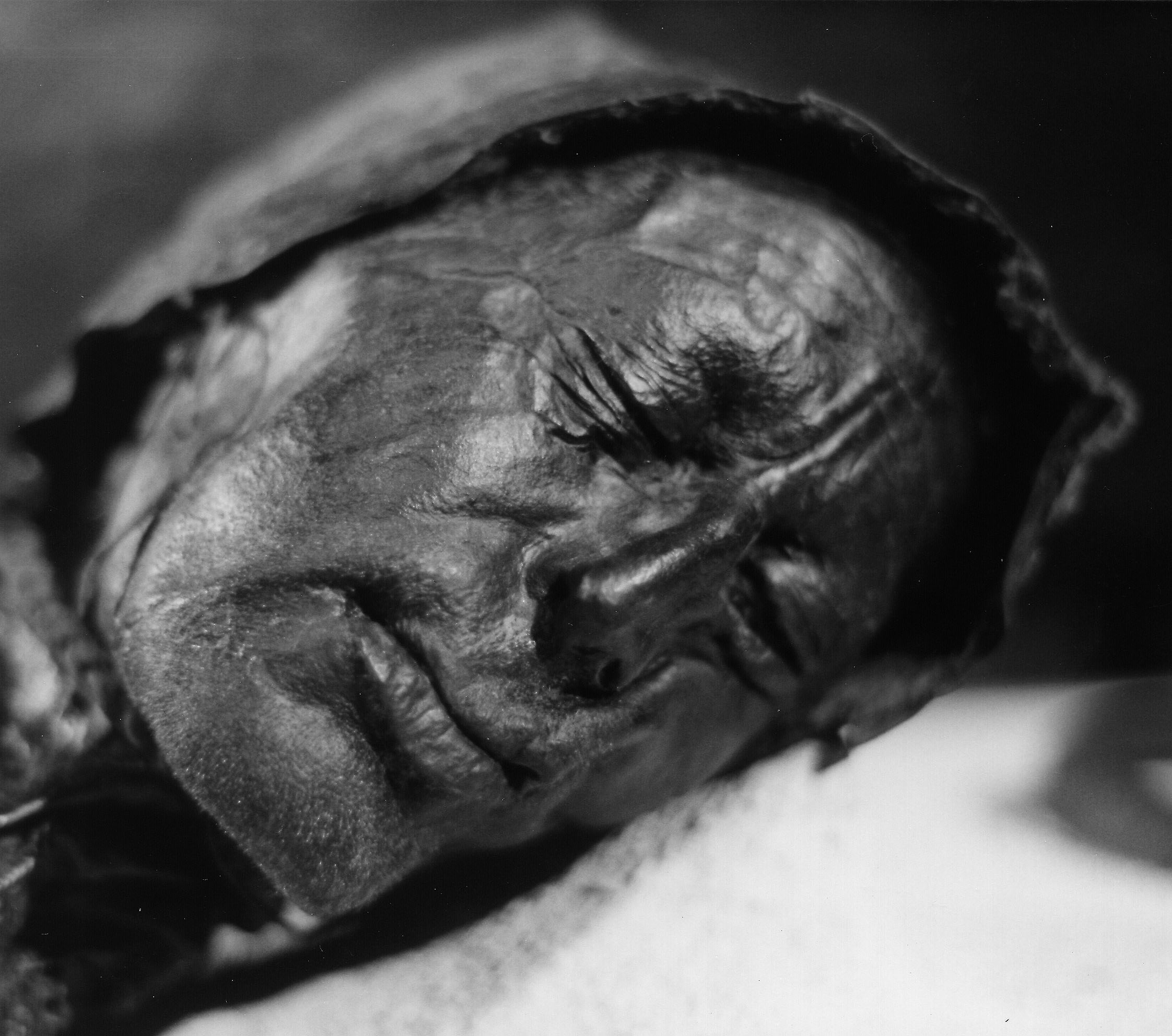|
Auðumbla
In Norse mythology, Auðumbla (; also Auðhumla and Auðumla ) is a primeval cow. The primordial frost jötunn Ymir fed upon her milk, and over the course of three days she Mineral lick#Mythology, licked away the salty rime rocks and revealed Búri, grandfather of the gods and brothers Odin, Vili and Vé. The creature is attested solely in the ''Prose Edda'', composed in the 13th century by Icelander Snorri Sturluson. Scholars identify her as stemming from a very early stratum of Germanic mythology, and ultimately belonging to Proto-Indo-European mythology#Interpretations, larger complex of Sacred bull, primordial bovines or Horned deity, cow-associated goddesses. Name The cow's name variously appears in ''Prose Edda'' manuscripts as , , and , and is generally accepted as meaning 'hornless cow rich in milk' (from Old Norse 'riches' and 'hornless').See discussion in both Lindow 2001:63 and Simek 2007:22. The compound presents some level of semantic ambiguity. A parallel occ ... [...More Info...] [...Related Items...] OR: [Wikipedia] [Google] [Baidu] |
Ymir
In Norse mythology, Ymir (), also called Aurgelmir, Brimir, or Bláinn, is the ancestor of all jötnar. Ymir is attested in the ''Poetic Edda'', compiled in the 13th century from earlier traditional material, in the ''Prose Edda'', written by Snorri Sturluson in the 13th century, and in the poetry of skalds. Taken together, several stanzas from four poems collected in the ''Poetic Edda'' refer to Ymir as a primeval being who was born from atter (), yeasty venom that dripped from the icy rivers called the Élivágar, and lived in the grassless void of Ginnungagap. Ymir gave birth to a male and female from his armpits, and his legs together begat a six-headed being. The grandsons of Búri, the gods Odin and Vili and Vé, fashioned the Earth—elsewhere personified as a goddess named Jörð—from Ymir's flesh; the oceans from his blood; from his bones, the mountains; from his hair, the trees; from his brains, the clouds; from his skull, the heavens; and from his eyebro ... [...More Info...] [...Related Items...] OR: [Wikipedia] [Google] [Baidu] |
Germanic Mythology
Germanic mythology consists of the body of myths native to the Germanic peoples, including Norse mythology, Anglo-Saxon paganism#Mythology, Anglo-Saxon mythology, and Continental Germanic mythology. It was a key element of Germanic paganism. Origins As the Germanic languages developed from Proto-Indo-European language, Germanic mythology is ultimately a development of Proto-Indo-European mythology. Archaeological remains, such as petroglyphs in Scandinavia, suggest continuity in Germanic mythology since at least the Nordic Bronze Age. Sources The earliest written sources on Germanic mythology include literature by Ancient Rome, Roman writers. This includes ''Commentaries on the Gallic War'' by Julius Caesar, ''Geographica'' by Strabo, and ''Germania (book), Germania'' by Tacitus. Later Latin-language sources on Germanic mythology include ''Getica'' by Jordanes, ''History of the Lombards'' by Paul the Deacon, ''Ecclesiastical History of the English People'' by Bede, ''Vita Ansga ... [...More Info...] [...Related Items...] OR: [Wikipedia] [Google] [Baidu] |
Mineral Lick
A mineral lick (also known as a salt lick) is a place where animals can go to lick essential mineral nutrients from a deposit of salts and other minerals. Mineral licks can be naturally occurring or artificial (such as blocks of salt that farmers place in pastures for livestock to lick). Natural licks are common, and they provide essential elements such as phosphorus and the biometals (sodium, calcium, iron, zinc, and trace elements) required for bone, muscle and other growth in herbivorous mammals such as deer, moose, elephants, hippos, rhinos, giraffes, zebras, wildebeests, tapirs, woodchucks, fox squirrels, mountain goats, porcupines, and frugivorous bats. Such licks are especially important in ecosystems such as tropical rainforests and grasslands with poor general availability of nutrients. Harsh weather exposes salty mineral deposits that draw animals from miles away for a taste of needed nutrients. It is thought that certain fauna can detect calcium in salt licks. ... [...More Info...] [...Related Items...] OR: [Wikipedia] [Google] [Baidu] |
Búri
In Norse mythology, Búri (Old Norse: ) is a divinity god 'producer, father' of all other gods,Simek (Simek 2007:47). and an early ancestor of the Æsir gods of the principal pantheon in Old Norse religion. Búri was licked free from salty rime stones by the primeval cow Auðumbla over the course of three days. Búri's background beyond this point is unattested, and he had a son, Borr, by way of an unknown process. Búri is attested in the ''Prose Edda'', composed in the 13th century by Icelander Snorri Sturluson. The ''Prose Edda'' includes a quote from a 12th-century poem by skald Þórvaldr Blönduskáld that mentions the figure. Búri's mysterious origins are the subject of scholarly commentary and interpretation. Name The name ''Búri'', like the name of his son ''Borr, Burr'', is derived from the Proto-Germanic *''wiktionary:Appendix:Proto-Germanic/buriz, buriz'' "son, born". Thus, both names basically mean the same thing. In research, Buri's name is translated as "begotten ... [...More Info...] [...Related Items...] OR: [Wikipedia] [Google] [Baidu] |
Hera
In ancient Greek religion, Hera (; ; in Ionic Greek, Ionic and Homeric Greek) is the goddess of marriage, women, and family, and the protector of women during childbirth. In Greek mythology, she is queen of the twelve Olympians and Mount Olympus, sister and wife of Zeus, and daughter of the Titans Cronus and Rhea (mythology), Rhea. One of her defining characteristics in myth is her jealous and vengeful nature in dealing with any who offended her, especially Zeus's numerous adulterous lovers and illegitimate offspring. Her iconography usually presents her as a dignified, matronly figure, upright or enthroned, crowned with a ''polos'' or diadem, sometimes veiled as a married woman. She is the patron goddess of lawful marriage. She presides over weddings, blesses and legalises marital unions, and protects women from harm during childbirth. Her sacred animals include the Cattle, cow, cuckoo, and Peafowl, peacock. She is sometimes shown holding a pomegranate as an emblem of immort ... [...More Info...] [...Related Items...] OR: [Wikipedia] [Google] [Baidu] |
Jötunn
A (also jotun; plural ; in the normalised scholarly spelling of Old Norse, ; or, in Old English, , plural ) is a type of being in Germanic mythology. In Norse mythology, are often contrasted with gods (the Æsir and Vanir) and with other non-human figures, such as dwarf (mythology), dwarfs and elf, elves, although the groupings are not always mutually exclusive. The entities included in the category are referred to by several other terms, including , (or ) and if male and or if female. The typically dwell across boundaries from the gods and humans in lands such as . The are frequently attested throughout the Old Norse records, with also featuring in the Old English epic poem ''Beowulf''. The usage of the terms is dynamic, with an overall trend that the beings become portrayed as less impressive and more negative as Christianity becomes more influential over time. Although the term "giant" is sometimes used to gloss the word "" and its apparent synonyms in some transl ... [...More Info...] [...Related Items...] OR: [Wikipedia] [Google] [Baidu] |
Nerthus
In Germanic paganism, Nerthus is a goddess associated with a ceremonial wagon procession. Nerthus is attested by first century A.D. Roman historian Tacitus in his ethnographic work ''Germania''. In ''Germania'', Tacitus records that a group of Germanic peoples were particularly distinguished by their veneration of the goddess. Tacitus describes the wagon procession in some detail: Nerthus's cart is found on an unspecified island in the "ocean", where it is kept in a sacred grove and draped in white cloth. Only a priest may touch it. When the priest detects Nerthus's presence by the cart, the cart is drawn by heifers. Nerthus's cart is met with celebration and peacetime everywhere it goes, and during her procession no one goes to war and all iron objects are locked away. In time, after the goddess has had her fill of human company, the priest returns the cart to her "temple" and slaves ritually wash the goddess, her cart, and the cloth in a "secluded lake". According to Tacitus, ... [...More Info...] [...Related Items...] OR: [Wikipedia] [Google] [Baidu] |
Nicolai Abildgaard, Ymer Dier Koen Ødhumbla, , KMS3397, Statens Museum For Kunst
{{disambig ...
Nicolai may refer to: *Nicolai (given name) people with the forename ''Nicolai'' *Nicolai (surname) people with the surname ''Nicolai'' *Nicolai (crater), a crater on the Moon See also * Niccolai, a surname * Nicolae (other) * Nicolao * Nicolay (other) * Nikolai (other) * Nikolay (other) Nikolai or Nikolay is an East Slavic variant of the masculine name Nicholas. It may refer to: People Royalty * Nicholas I of Russia (1796–1855), or Nikolay I, Emperor of Russia from 1825 until 1855 * Nicholas II of Russia (1868–1918), or Niko ... [...More Info...] [...Related Items...] OR: [Wikipedia] [Google] [Baidu] |
John Lindow
John Frederick Lindow (born July 23, 1946) is an American philologist who is Professor Emeritus of Old Norse and Folklore at University of California, Berkeley. He is a well known authority on Old Norse religion and literature. Biography John Lindow was born in Washington, D.C., on July 23, 1946, the son of Wesley Lindow and Eleanor Niemetta. His father was a banker and his mother was a teacher. John Lindow received his undergraduate degree at Harvard University, where he gained an A.B., ''magna cum laude'', in 1968, and a PhD in 1972, both in Germanic Languages and Literatures. After gaining his Ph.D, Lindow joined the faculty at University of California, Berkeley, serving as Acting Assistant Professor (1972–1974), Assistant Professor (1974–1977), Associate Professor (1977–1983), and Professor of Scandinavian (1983-?). He was since retired as Professor Emeritus of Old Norse and Folklore. In 1977, Lindow was elected as a corresponding member of the Royal Gustavus Ado ... [...More Info...] [...Related Items...] OR: [Wikipedia] [Google] [Baidu] |
Rudolf Simek
Rudolf Simek (born 21 February 1954) is an Austrian philologist and religious studies scholar who is Professor and Chair of Ancient German and Nordic Studies at the University of Bonn. Simek specializes in Germanic studies, and is the author of several notable works on Germanic religion and mythology (including Old Norse religion and mythology), Germanic peoples, Vikings, Old Norse literature, and the culture of Medieval Europe. Biography Since 1995, Simek has been Professor and Chair of Ancient German and Nordic Studies at the University of Bonn. Simek was appointed Professor of Comparative Religion at the University of Tromsø in 1999, and Professor of Old Nordic Studies at the University of Sydney in 2000. Simek has held a number of visiting professorships, having had long research stays at the universities of Reykjavik, Copenhagen, London, Oxford and Sydney. From 2000 to 2003, Simek was Chairman of the International Saga Society (German: Internationalen-Saga-Gesellscha ... [...More Info...] [...Related Items...] OR: [Wikipedia] [Google] [Baidu] |
Germania (book)
The ''Germania'', written by the Roman historian Publius Cornelius Tacitus around 98 AD and originally titled ''On the Origin and Situation of the Germans'' (), is a historical and ethnographic work on the Germanic peoples outside the Roman Empire. Contents The ''Germania'' begins with a description of the lands, laws, and customs of the Germanic people (chapters 1–27); it then describes individual peoples, beginning with those dwelling closest to Roman lands and ending on the uttermost shores of the Baltic, among the amber-gathering Aesti, the Fenni, and the unknown peoples beyond them. Tacitus says (chapter 2) that physically, the Germanic peoples appear to be a distinct nation, not an admixture of their neighbors, since nobody would desire to migrate to a climate as horrid as that of Germania. They are divided into three large branches, the Ingaevones, the Irminones, and the Istaevones, deriving their ancestry from three sons of Mannus, son of Tuisto, their comm ... [...More Info...] [...Related Items...] OR: [Wikipedia] [Google] [Baidu] |






